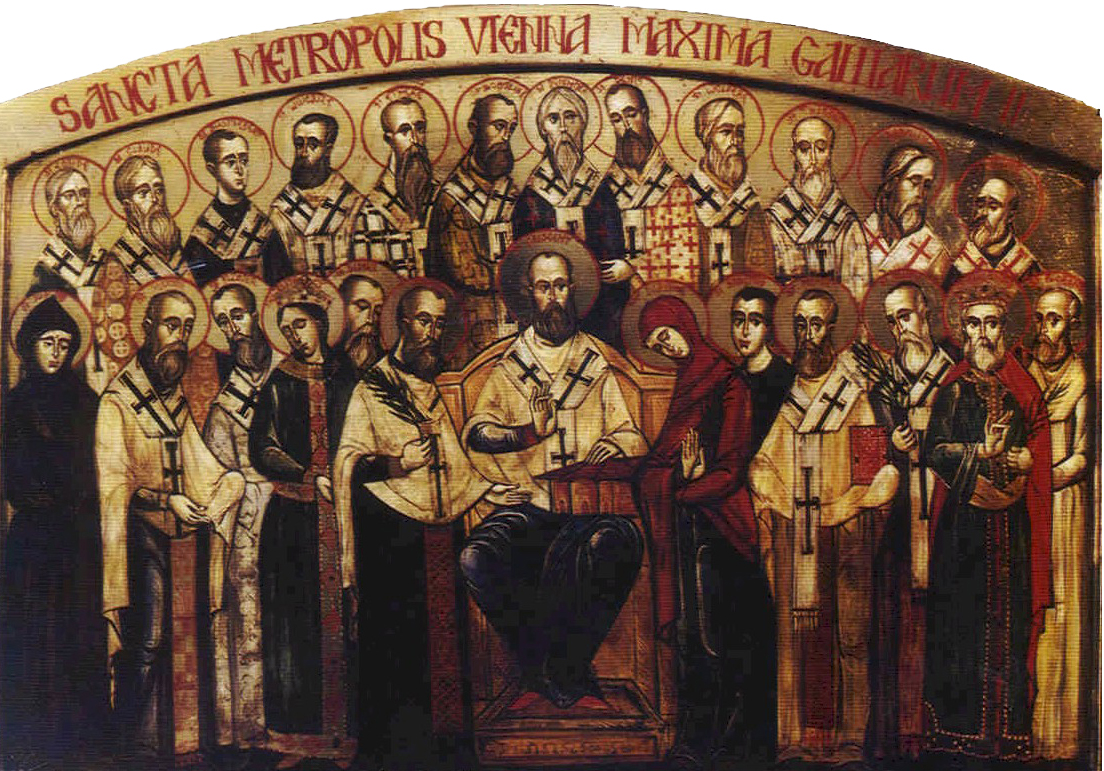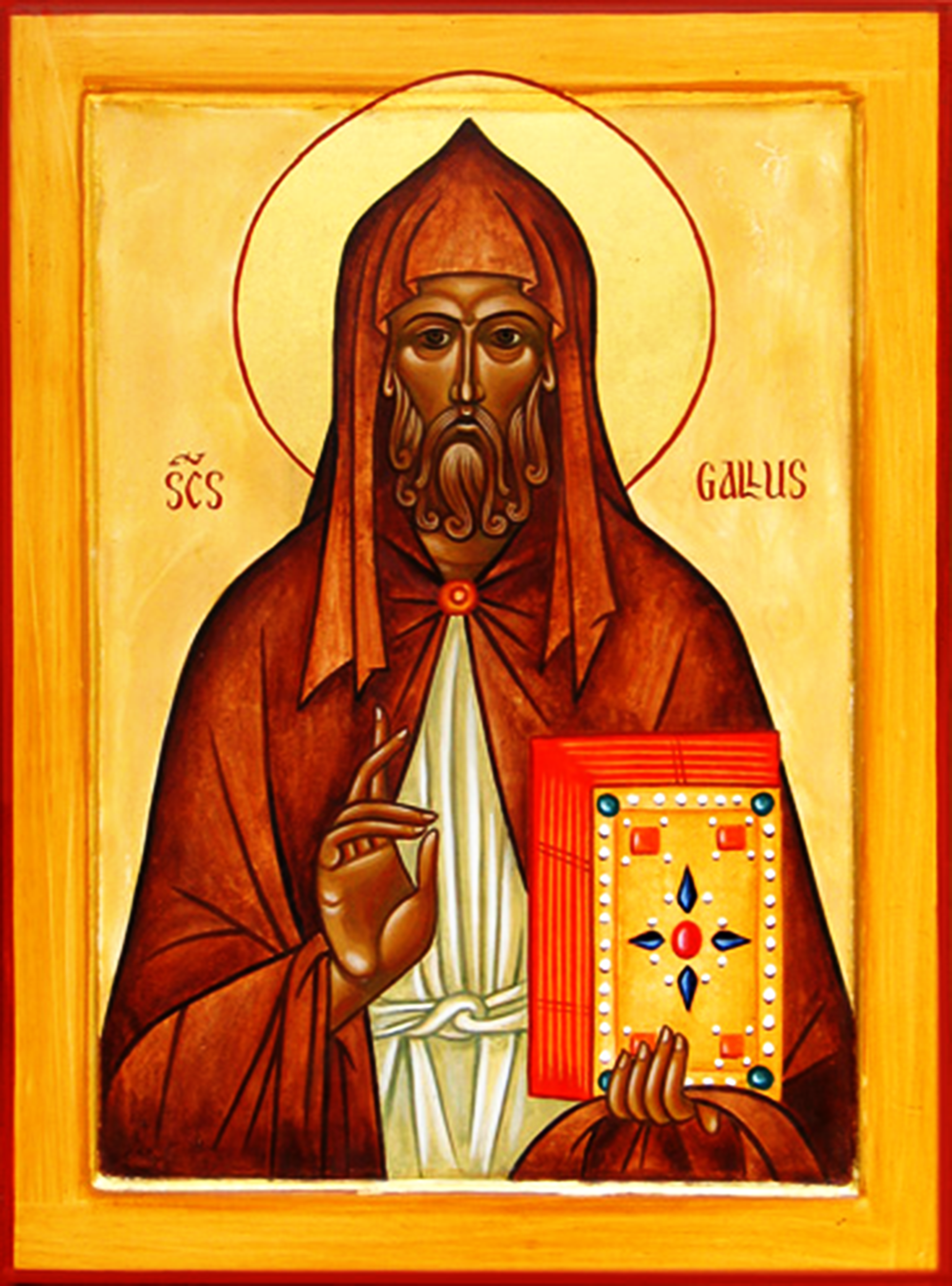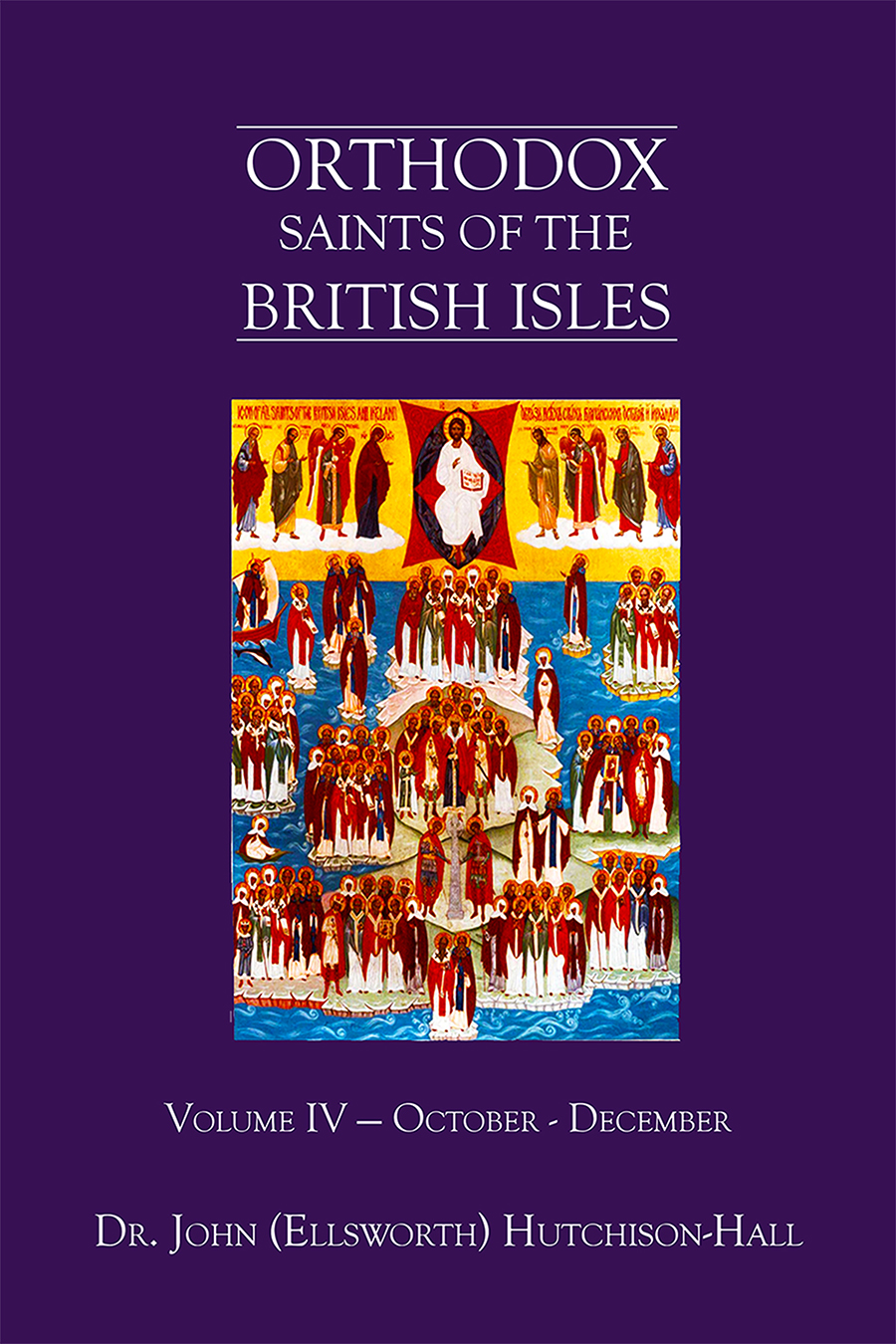
Orthodox Saints of the Pre-Schism
See of Rome
29th October (NS) — 16th October (OS) 2024
AMBROSE (AMBROSE, AMBROSIUS) of CAHORS, historically counted as the thirteenth, though many traditions number him as sixteenth, Bishop of Cahors in Aquitaine (south-western France). The period of his episcopacy was quite tumultuous, and St. Ambrose was forced to quit his See in fear for his life more than once. Ultimately, St. Ambrose retired to spend the rest of his life as a hermit near Bourges (central France). St. Ambrose reposed, circa 752, soon after returning from a pilgrimage to Rome, at what is now called Saint-Ambroix in the Centre-Val de Loire region of France.
BALDERIC (BAUDRY) of MONTFAUCON, the founder and first Abbot of Montfaucon-d'Argonne Abbey in Loraine (north-eastern France). St. Balderic and his sister, St. Bova of Reims (24th April), were children of Sigebert I, King of Austrasia (r. 561–575). Several years after founding Montfaucon, St. Balderic founded the Abbey of Saint-Pierre-les-Dames in Reims (north-eastern France) with St. Bova as its first abbess. St. Balderic was the spiritual father of St. Wandrille of Fontenelle (22nd July), who spent a decade of his early years as a monk at Montfaucon. St. Balderic reposed circa 640 at Reims whilst visiting his sister.
BALDWIN (BAUDOIN), Archdeacon of Laon in Picardy (northern France), son of St. Salaberga (22nd September), and brother of St. Anstrudis of Laon (17th October). St. Baldwin was murdered circa 680, possibly by order of the tyrannical Mayor of the Palace of Neustria, Ebroin (†680/1), and subsequently venerated as a martyr.
BERCHARIUS, following his education under St. Nivard of Reims (1st September), Archbishop of Reims, St. Bercharius entered the Abbey of SS. Peter and Paul of Luxeuil (abbaye Saint-Pierre et Saint-Paul de Luxeuil) in Burgundy (east-central France). Returning to Reims, he prevailed upon St. Nivard to found the Abbey of St Peter (abbaye Saint-Pierre d'Hautvillers) in Hautvillers (north-eastern France), with St. Bercharius as its first Abbot. During his tenure as Abbot St. Bercharius also founded the men’s Abbey of SS. Peter and Paul of Montier-en-Der (abbaye Saint-Pierre-et-Saint-Paul de Montier-en-Der) on land he had inherited, and Pellmoutier, Puellarum Monasterium (for women) in the Diocese of Châlons-sur-Marne near Reims. In 696 St. Bercharius was mortally wounded when stabbed by a monk he had reprimanded. When the offender was brought before him rather than condemn the monk, St. Bercharius simply told the monk to go to on a pilgrimage to Rome where he should seek absolution. St. Bercharius reposed two days after he was stabbed and was subsequently venerated as a martyr.
BOLONIA, a fifteen-year-old nun martyred during the reign of Emperor Julian the Apostate (r. 361–363). No further information on St. Bolonia's life seems to be extant.
CONOGAN of QUIMPER, a Breton saint whose life is sorely lacking in verifiable details. Possibly a native of Wales, St. Conogan is generally said to have been an early Bishop of Quimper in Brittany (north-western France). St. Conogan reposed in 460.
DULCIDIUS (DULCET, DOUCIS, DULCIDE) of AGEN, the fifth Bishop of Agen (south-western France), succeeding St. Phaebadius of Agen (25th April). St. Dulcidius is remembered for the fervour of his worship, his charity and care for the poor and the sick, as well as his ardent defence of the faith against Arianism. St. Dulcidius reposed circa 450.
ELIPHIUS (ELOFF, ÉLIPHE) of TOUL, a native of Ireland who was martyred in 362 at Toul (north-eastern France) during the reign of Emperor Julian the Apostate (r. 361–363) — the Acta Sanctorum states on Julian's personal orders. His relics were translated in the tenth century to Great St. Martin Church in Cologne in the present-day German state of North Rhine-Westphalia.
EREMBERTA of WIERRE, (Seventh Century), a niece of St. Wulmar (20th July), and first Abbess of Wierre-au-Bois Monastery (monastère Wierre-au-Bois) in Pas-de-Calais (northern France), which was founded by St. Wulmar.
FLORENTINUS of TRIER, a fourth century Bishop of Trier in the present-day German state of Rhineland-Palatinate. No further information on his life is extant.
GALL (GALLUS), Apostle of Switzerland, a monk at Bangor (Bennchor) in Co. Down Ireland and one of the twelve disciples who accompanied St. Columbanus of Bobbio (23rd November) to France. A distinguished scholar of the scriptures, St. Gall was one of the founders of the Abbey of SS. Peter and Paul of Luxeuil (abbaye Saint-Pierre et Saint-Paul de Luxeuil) in Burgundy (east-central France). St. Gall later settled as a hermit near Lake Constance in present-day Switzerland where the monastery and town of Saint Gall later grew up. He reposed circa 645 and is venerated as one of the Apostles of Switzerland.
JUNIAN, (Fifth Century), a hermit at Comodoliac — now called Saint-Junien — in the Limousin region of present-day France.
LULL (LULLUS, LUL), a monk at Malmesbury Abbey in Wiltshire, who joined St. Boniface of Mainz's (5th June) mission to the Germans. St. Lull was consecrated bishop 751–52 by St. Boniface to serve as his auxiliary, and succeeded St. Boniface as the Archbishop of Mainz in 754. St. Lull reposed in 787.
MAGNOBODUS (MAINBOEUF) of ANGERS, a Frankish noble, chosen by popular acclaim to serve as (seventh?) Bishop of Angers in Anjou (western France). St. Magnobodus reposed circa 670.
MARTINIAN, SATURIAN, and COMPANIONS, Martyrs of Mauretania, four brothers who were slaves of an Arian Vandal in Mauritania (the Mediterranean coast of present-day Morocco). They were martyred in 458, by being dragged by horses to death during the reign of the Arian Gaiseric, King of the Vandals (r. 428–477).
MARTYRS of NORTH-WESTERN AFRICA, a group of two hundred and twenty Christians martyred in north-western Africa. There are no further details extant.
MUMMOLIN (MOMMOLINUS), a native of present-day north-eastern Switzerland, St. Mummolin received monastic tonsure at the Abbey of SS. Peter and Paul of Luxeuil (abbaye Saint-Pierre et Saint-Paul de Luxeuil) in Burgundy (east-central France). He later spent time at the Abbey of St. Peter / abbaye Saint-Pierre (later the Abbey of St. Bertin / abbaye Saint-Bertin de Saint-Omer) in Sithiu (present-day Saint-Omer, France), and served as its Abbot before being consecrated Bishop of Noyon-Tournai (north-eastern France) in 660–1, serving that See until his repose circa 686.
SATURNINUS, NEREUS, and COMPANIONS, a group of three hundred and sixty-five orthodox Christians, in the present-day area of Tunisia and Algeria, who were martyred in 450 in the persecutions of orthodox Christians during the reign of Arian Gaiseric, King of the Vandals (r. 428–477).
VITALIS (VIAL) of NOIRMOUTIER, a native of England who received monastic tonsure at the Abbey of St. Philibert (abbaye Saint-Philibert de Noirmoutier) in Noirmoutier in the Pays de la Loire region of present-day western France. St. Vitalis spent the latter years of his life as a hermit on Mont Scobrit near the Loire River. He reposed circa 740.
Get your copy of Orthodox Saints of the British Isles today.
Available at Amazon or your favourite e-bookstore.
COLMÁN of KILMACDUAGH, upon completion of his education at St. Enda of Aran’s (21st March ) monastery on Inis Mór (Inishmore) one of the Aran Islands off the western coast of Ireland, and ordination to the priesthood St. Colmán went to live as a hermit at Arranmore, an island off the west coast of Co. Donegal, north-western Ireland. There he built two churches, which form the present ruins at Kilmurvey. At some point, St. Colmán reluctantly accepted elevation to the episcopacy and founded Kilmacduagh Monastery. Kilmacduagh was the foundation of the modern Roman Catholic Diocese of Galway, Kilmacduagh, and Kilfenora. St. Colmán reposed 632. Though the Martyrology of Donegal lists his feast as being 2nd February, for as long as can be recalled, the practice of the Diocese of Kilmacduagh has been to keep it on the date of his repose 29th October.
Troparion of St. Colmán of Kilmacduagh — Tone VIII
Rejecting the nobility of thy birth, O Father Colmán,/
thou didst seek God in the solitude of desert places./
Thy virtue like a beacon, drew men unto thee/
and thou didst guide them into the way of salvation./
Guide us also by thy prayers, that our souls may be saved.
ERMELINDA (ERMELINDIS) of MELDAERT, an anchoress in Meldaert in present-day Belgium who reposed circa 595. St. Ermelinda's relics are enshrined in Meldaert.
EUSEBIA of BERGAMO, niece of St. Domnio of Bergamo (16th July). Like her uncle, St. Eusebia was martyred by beheading during the Diocletianic Persecution (303–313).
HYACINTH, QUINTUS, FELICIAN, and LUCIUS, Martyrs of Lucania, (Date Unknown), nothing more than the names of these martyrs has survived to the present. They were martyred at Lucania—present-day Basilicata—in the south of Italy.
JOHN of AUTUN, (Date Unknown), a Bishop of Autun in Burgundy (east-central France) who has been venerated since time immemorial along with the other bishops of that See who are numbered amongst the saints. Nothing further is known of St. John's life.
KENNERA, (Fourth Century), a Scottish anchoress from whom Kirkinner, Dumfries and Galloway, Scotland gets its name. There is no record of St. Kennera's existence, aside from a brief mention in the Acta Sanctorum by the pre-eminent hagiographic scholars of the Société des Bollandistes (the Bollandists) and listing in Forbes’ Kalendar of Scottish Saints.
Troparion of St. Kennera — Tone VIII
Bright beacon of purity and Light of Galloway, O holy Kennera,/
as thou didst preserve thyself in virginity for love of Christ,/
pray to Him, that despite our corrupt condition
He will grant us great mercy.
SIGOLINUS (SIGHELM) of STAVELOT, a seventh century Abbot of the Princely Abbey of Stavelot-Malmedy (Fürstabtei Stablo-Malmedy) in present-day southern Belgium. St. Sigolinus reposed circa 670.
STEPHEN of CAIAZZO, an Abbot of the Territorial Abbey of San Salvatore Maggiore in the present-day Diocese of Reiti, north-east of Rome. In 979, St. Stephen was consecrated Bishop of Caiazzo (southern Italy). St. Stephen reposed 1023.
TERENCE of METZ, an early sixth century Bishop of Metz (north-east France). He is remembered for his devotion to maintaining orthodox doctrine in the face of the heresies of the day. St. Terence reposed in 520.
THEODORE (THEUDAR) of VIENNE, a disciple of St. Caesarius of Arles (27th August). St. Theodore was a priest in the Diocese of Vienne (south-eastern France), as well as abbot of one of the monasteries in that See. In addition to the great amount of time St. Theodore spent caring for the poor, sick, and imprisoned, he also is responsible for the building of several churches and monasteries in the diocese. In the final years of his life, St. Theodore lived as a hermit in the church of St. Laurence in Vienne, where he reposed circa 575.
Prior to the Schism the Patriarchate of Rome was Orthodox, and fully in communion with the Orthodox Church. As Saint John of Shanghai and San Francisco +1966 said “The West was Orthodox for a thousand years, and her venerable Liturgy is far older than any of her heresies”.
Details of British Saints excerpted from Orthodox Saints of the British Isles.
Details of continental saints from these sources.
In many cases there are several spelling versions of the names of saints from the British Isles. I use the Oxford Dictionary of National Biography version as the primary version with the more prevalent version in parenthesis e.g. Ceadda (Chad) of Lichfield.


